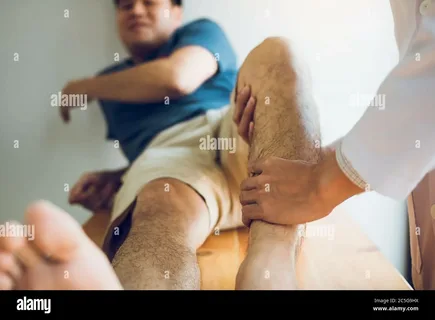Loguytren Problems: Causes, Symptoms, and Treatments
Loguytren problems is a common term people use when they actually mean Dupuytren’s contracture. It is a hand condition that affects the connective tissue under the skin of the palm and fingers. Over time, this tissue becomes thick and tight, which pulls the fingers inward toward the palm. This makes it difficult to straighten the fingers or perform simple hand movements.
The condition usually develops slowly, and many people do not notice it until the fingers start bending in an unusual way. It is not usually painful, but it can interfere with daily activities such as writing, cooking, or shaking hands. Because of its slow progress, people often ignore it in the early stages, but later it becomes more difficult to manage.
What is Dupuytren’s Contracture (Loguytren Problems)?
Dupuytren’s contracture, also known as Loguytren problems, is a progressive hand condition. It mainly affects the layer of tissue called fascia, which lies beneath the skin of the palm. Instead of staying flexible, this tissue thickens and forms hard knots or cords. These cords eventually cause one or more fingers to bend toward the palm.
The ring finger and little finger are most commonly affected. In severe cases, the condition may spread to other fingers as well. Even though it is not life-threatening, Dupuytren’s contracture can reduce hand mobility and make daily tasks harder. Doctors consider it a chronic condition that needs proper management, especially if it interferes with normal life.
Common Symptoms of Loguytren Problems
The symptoms of Loguytren problems appear slowly over several years. In the beginning, people may notice a small lump or thickening of the skin in the palm. This lump may feel firm and is usually not painful. As time passes, the lump develops into cords that pull the fingers inward.
The most noticeable symptom is the inability to fully straighten the fingers. Everyday tasks such as putting on gloves, holding objects, or shaking hands may become uncomfortable. In some cases, the skin on the palm may look puckered or dimpled. Unlike arthritis, this condition does not cause swelling, redness, or joint pain.
Causes and Risk Factors Behind Loguytren Problems

The exact cause of Dupuytren’s contracture is not fully understood. However, doctors believe it is related to abnormal growth of connective tissue in the palm. Genetic factors play a major role, as the condition often runs in families. If someone’s parents or grandparents had it, they are more likely to develop it.
Certain risk factors increase the chances of developing Loguytren problems. These include being over the age of 40, being male, and having European ancestry. Medical conditions like diabetes and seizures also increase risk. Lifestyle choices such as smoking and heavy alcohol use have been linked to the condition as well.
How Loguytren Problems Affect Daily Life
At first, people with Loguytren problems may not notice major changes in their daily life. But as the condition worsens, simple activities become challenging. For example, shaking hands, typing, or washing hands may feel awkward because the fingers cannot fully extend.
In advanced cases, the condition may prevent people from putting their hands in their pockets, wearing gloves, or holding large objects. This loss of function can be frustrating and may even affect confidence. While the condition is not painful, the reduced mobility impacts independence and quality of life.
Stages of Loguytren Problems

Loguytren problems progress through different stages. The first stage usually involves a small, painless lump in the palm. This lump may remain stable for months or years without significant changes.
In the second stage, cords begin forming under the skin, pulling the fingers inward. By the third stage, the fingers are noticeably bent and cannot be straightened. In severe cases, the bending becomes permanent, and surgery may be the only effective option to improve mobility.
Diagnosis and Medical Checkups
Doctors can usually diagnose Loguytren problems by examining the hand. They will look for thickened skin, lumps, or bent fingers. Unlike many other conditions, no special blood test is needed for diagnosis.
During the checkup, the doctor may ask the patient to place their hand flat on the table. If the fingers cannot be fully flattened, this is a sign of Dupuytren’s contracture. In some cases, imaging tests like ultrasound may be used to check the thickness of the tissue.
Treatment Options for Loguytren Problems
Non-surgical treatments
In the early stages, doctors may recommend non-surgical treatments such as steroid injections, physical therapy, or enzyme injections to soften the tissue. These methods help slow down the progress and improve flexibility.
Surgical treatments
For advanced cases, surgery may be required. The most common procedure is fasciotomy, where the cords are cut to release the fingers. Another option is fasciectomy, where the affected tissue is completely removed. In some cases, minimally invasive procedures with needle techniques are also available.
Home Remedies and Self-care Tips

People with mild Loguytren problems can try simple home care methods to improve hand function. Stretching exercises and gentle massage may help keep the fingers flexible. Heat therapy, like soaking the hand in warm water, can also relax the tissue.
Maintaining a healthy lifestyle is equally important. Reducing alcohol intake, quitting smoking, and controlling diabetes may lower the risk of the condition worsening. While home remedies cannot cure Dupuytren’s contracture, they can provide comfort and slow progression.
Prevention and Lifestyle Changes
There is no guaranteed way to prevent Loguytren problems because genetics play a strong role. However, adopting healthy habits can reduce risk. Avoiding smoking and limiting alcohol are important lifestyle changes.
Managing chronic conditions such as diabetes and high blood pressure may also help. Regular hand exercises, especially for people with family history of the condition, may keep the tissues more flexible and reduce the severity of symptoms.
Complications if Left Untreated
If Dupuytren’s contracture is ignored, it can lead to serious complications. The fingers may become permanently bent, making it impossible to grip objects properly. This can interfere with work, hobbies, and even personal hygiene.
Over time, the lack of mobility may cause stiffness in the hand joints. In extreme cases, the hand may lose most of its function, requiring surgery to regain even partial movement. This is why early diagnosis and treatment are important.
Living with Loguytren Problems: Patient Experiences

Many people with Loguytren problems adjust to their condition by finding new ways to use their hands. Some use special tools or modify their daily activities. For example, using larger handles on kitchen tools or voice-to-text technology for typing.
Support groups and online communities also help patients share experiences and coping strategies. Living with the condition can be frustrating, but with proper care, most people can still enjoy a good quality of life.
When to See a Doctor?
It is important to see a doctor when the fingers start bending and daily activities become difficult. If you notice lumps in your palm or cannot flatten your hand completely on a table, medical advice is recommended.
Early treatment gives better results and may prevent the need for surgery. Delaying checkups only allows the condition to worsen, so timely medical help is the best way to manage it effectively.
Future Research and Advances in Treatment
Medical research is ongoing to find better treatments for Dupuytren’s contracture. New enzyme injections and less invasive surgical techniques are showing promise. These treatments may offer faster recovery and fewer complications.
Researchers are also studying genetic factors to understand why the condition develops. In the future, early detection through genetic testing may become possible. This could help in preventing severe cases by starting treatment earlier.
Conclusion
Loguytren problems, also known as Dupuytren’s contracture, is a hand condition that develops slowly but can have a major impact on daily life. It starts with small lumps in the palm and later causes fingers to bend inward, making simple tasks harder.
Although the exact cause is unknown, genetics, age, lifestyle, and certain medical conditions increase the risk. Early diagnosis, lifestyle changes, and treatment options—both surgical and non-surgical—can help people manage the condition effectively.
FAQs about Loguytren Problems
What are Loguytren problems?
They refer to Dupuytren’s contracture, a hand condition where fingers bend inward due to thickened tissue.
Is Loguytren problems painful?
Most people do not feel pain, but stiffness and reduced mobility can be uncomfortable.
Who is most at risk of Loguytren problems?
Men over 40, people with European ancestry, and those with family history are more likely to get it.
Can Loguytren problems be cured without surgery?
Mild cases can be managed with injections and therapy, but severe cases often need surgery.
How can I slow down the progress of Loguytren problems?
Quitting smoking, reducing alcohol, managing diabetes, and doing hand exercises can help.
Related Post:




